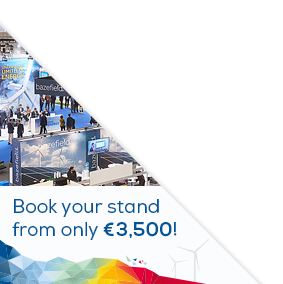Posters
Siblings:
ProceedingsProgrammeProceedingsSpeakersPostersContent PartnersElectrification StageMarkets TheatreR&I ActivitiesStudent DayProgramme Committee & abstracts reviewersPresenters dashboardCome meet the poster presenters to ask them questions and discuss their work
We would like to invite you to come and see the posters at our upcoming conference. The posters will showcase a diverse range of research topics and provide an opportunity for delegates to engage with the authors and learn more about their work. Whether you are a seasoned researcher or simply curious about the latest developments in your field, we believe that the posters will offer something of interest to everyone. So please, join us at the conference and take advantage of this opportunity to learn and engage with your peers in the academic community. We look forward to seeing you there!

PO237: Data-driven characterization of performance trends in ageing wind turbines
Alessandro Murgia, Data Scientist, Sirris
Abstract
Understanding performance decay in ageing wind turbines is a hot topic, given that around 50% of wind turbines sited in several European countries are aged at least fifteen years. In this context, this work presents an innovative method to monitor the long-term wind turbine performance trends through the analysis of SCADA data. The work is organized as a cooperation between academia and industry (ENGIE). The qualifying point of the method is its capability in factoring out confounding effects on power production. The dependence of turbine power on weather variables is addressed through the hypercube method, i.e. transforming the historical SCADA data into a look-up table to characterize the expected turbine behavior. The dependence of turbine power on seasonality is addressed via Seasonal and Trend decomposition and then retaining the only trend. The latter is then used to compute the efficiency, i.e. the ratio between actual and expected power production. The proposed method is tested on twenty years of synthetic data, generated from the ERA5 reanalysis data set, and on a real-world data set which describes a decade of operation of a large wind farm owned by ENGIE Italia. The test on synthetic data confirms that the method can capture performance drift. The real-world test case is more complex, but with the proposed method it has been possible to give meaningful explanations of the wind turbines' behavior. Actually, in the lifetime of an operating wind farm there is likely a declining performance trend but there are as well small energy gains due to technology optimization and the long-term balance is non-trivial. For the considered test case, it has been observed that the optimization of rotor speed control has given different improvements to the various wind turbines, resulting in a slightly positive or slightly negative overall average trend.







